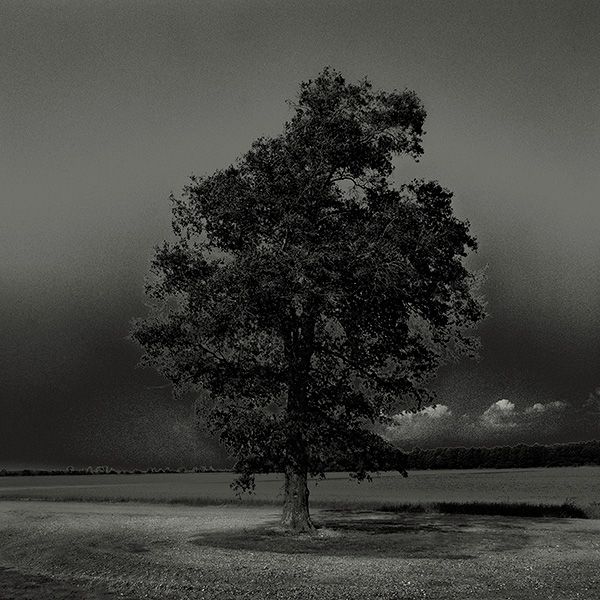A photographer can sometimes be the lone witness to injustice, but what about the land itself?
In this image, a single tree stands in the Arkansas Delta, its branches stark against the sky. At first glance, it might feel timeless, like any other tree along a country road. Yet this tree carries memory. It grows on the site of the former Rohwer incarceration camp in McGehee, Arkansas, where more than 8,000 Japanese Americans were unjustly imprisoned during World War II.
Rohwer was one of ten incarceration camps built after President Franklin D. Roosevelt signed Executive Order 9066 in 1942. More than 125,000 people of Japanese ancestry — two-thirds of them U.S. citizens — were forced from their homes and sent to remote sites like this one. At Rohwer, families lived in hastily built
barracks on the marshy, flood-prone lowlands of the Mississippi Delta, confined behind barbed wire and watchtowers, dehumanized and treated as enemies in their own country.
Today, little remains of the camp itself, but the trees endure. Photographer James Nakagawa calls them “witness trees”, silent observers of injustice, living markers of a history too easily ignored.
Nakagawa began photographing these sites in 2022, traveling across the country to find the landscapes that once held Japanese American incarceration camps. For him, the project is personal.
Born in New York to Japanese parents and raised between Japan and the United States, his work often explores identity, memory, and belonging.
During the pandemic and amid rising anti-Asian hate, he turned to these landscapes as a way to confront history and himself. He sees these trees as places where the past and present converge.
Notice the glow in the photograph. The tree seems to hover between shadow and light. Nakagawa manipulated the image intentionally, giving it a spectral aura that speaks to the heaviness of the place and the memories it holds.
For Nakagawa, this tree was never just subject matter. It is a witness. And through his lens, the act of looking becomes an act of remembering, inviting us to pause, reflect, and reckon with the stories rooted in our collective history and the land around us.

